Belle Starr

Brief Synopsis
Cast & Crew
Irving Cummings
Randolph Scott
Gene Tierney
Dana Andrews
John Shepperd
Elizabeth Patterson
Film Details
Technical Specs

Synopsis
Soon after the Civil War, Confederate soldier Ed Shirley returns to Missouri and is greeted by his headstrong, beautiful sister Belle, who has been managing their plantation on her own. Belle furiously rejects Ed's assertion that the South has lost the war, and is cold to Union major Thomas Crail, who was Belle's sweetheart before the war. Crail has returned to Missouri to stop the Confederate guerrillas who are plaguing Union soldiers. Wanting to restore his friendship with Crail, Ed invites him to dinner, although Belle declares that she would prefer the company of Sam Starr, one of the bandits whom Crail has been ordered to capture. One of Sam's compatriots overhears Belle's remarks, and Sam joins the dinner party that evening. Sam and Belle are attracted to each other, and later that night, after Sam is wounded while trying to escape from Crail's men, Belle hides him in her room. Crail finds Sam, however, and is also forced to arrest Ed, as he is the head of the household, and to burn the Shirley mansion, as punishment for aiding the renegades. Belle then accompanies Sam's right-hand man, Blue Duck, to Sam's hideout, and the next night, Belle and Blue Duck engineer the jailbreak of Sam and Ed. While Ed maintains that they must return, Belle announces her intention to join Sam's outfit. Ed tries to persuade Belle that Sam is fighting purely for the love of fighting, but Belle, honestly believing that Sam is trying to preserve the South she loves, orders her brother to leave. As time passes, Belle is branded an outlaw for participating in Sam's raids, but their love for each other grows. On the night they are married, Sam makes a speech to his men that makes Belle wonder about his motives, and when he invites Jim and John Cole to join the group, she becomes even more worried. One afternoon, while the Coles and Sam are leading a train robbery, Ed visits Belle and tells her that Sam's actions are tearing Missouri apart. Explaining that the Coles are hurting innocent people, Ed makes Belle promise to question Sam about their activities. As he is leaving, Ed is shot by Jim Cole, and a tearful Belle confronts Sam, who promises to give up his bandit lifestyle after one more job. Sam plans to kidnap Missouri governor Johnson, who will be speaking in town, so that he can dictate his terms to him. Unhappy with the plan, which was orchestrated by the Coles to get ransom money, Belle returns her wedding ring to Sam and tells him that she cannot wear it if they no longer think alike. Intending to turn herself in, Belle goes to her faithful servant, Mammy Lou, for help. Mammy Lou goes to town, and there learns that the governor's appearance is a trap to capture Sam. Hoping that giving herself up will save Sam, Belle rides to town, but on the way, she is shot by Jasper Tench, a horse thief who holds a grudge against her. Tench takes her body to Crail to claim the reward offered for her, but when Sam and Mammy Lou arrive, they state that the corpse is not Belle's so that Tench cannot receive the money. Sam and Mammy Lou then bid Belle a last farewell, after which Sam turns himself in to Crail. As Sam and Crail discuss Belle, they overhear two black men state that Belle can never be killed because she is a legend.

Director
Irving Cummings
Cast

Randolph Scott

Gene Tierney

Dana Andrews

John Shepperd
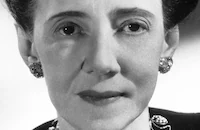
Elizabeth Patterson
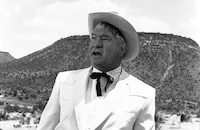
Chill Wills

Louise Beavers
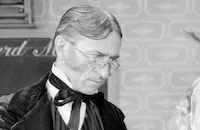
Olin Howland
Paul Burns
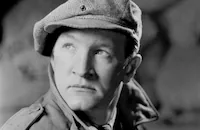
Joseph Sawyer
Joseph Downing
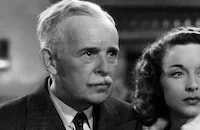
Howard Hickman
Charles Trowbridge

James Flavin
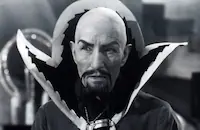
Charles Middleton
Hugh Chapman
Stymie Beard
Michael Morris
Dolores Hurlic
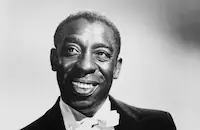
Clarence Muse
Clinton Rosemond
George Melford

Mae Marsh
Herbert Ashley
Davison Clark
George Reed
Norman Willis
Billy Wayne
Dick Rich
Crew
Travis Banton
Harry Brand
Otto Brower
Niven Busch
Richard Day
Len Hammond
Roger Heman
Nathan Juran
Natalie Kalmus
William Koenig
Thomas Little
Kenneth Macgowan
Alfred Newman
Ernest Palmer
Ray Rennahan
Cameron Rogers
Robert Simpson
Lamar Trotti
E. Clayton Ward
Saul Wurtzel

Film Details
Technical Specs

Articles
Belle Starr
20th Century Fox executives had learned of the exploits of the celebrated bandit queen via an article by Cameron Rogers, son in law of humorist Irvin S. Cobb. First published in the Pictorial Review in February 1927, "Belle Starr, the Gadfly of the South" was later included in Cameron's book Gallant Ladies. Buying an option on the story, Fox assigned a number of writers to work with Rogers on a screenplay treatment, among them Harvey F. Thew (credited with the adaptation of William Wellman's The Public Enemy, 1931), John L. Balderston (of Dracula [1931] fame) and Sonya Levien (who later shared a screenplay credit for Oklahoma!, 1955). A June 1941 item in The Hollywood Reporter leaked word of "a hushed-up battle over the original story credit" for Belle Starr; the story credit in the finished film would eventually go to Rogers and Niven Busch, who had shared with Jo Swerling credit for writing William Wyler's The Westerner (1940), starring Gary Cooper.
Initially, Belle Starr had been placed in the capable hands of utility director Roy Del Ruth, who had just wrapped the ghost comedy Topper Returns (1941) for producer Hal Roach. Actress-singer Alice Faye had been slotted to fill Belle Starr's boots until the studio brass reassigned her to The Great American Broadcast (1941) and Del Ruth went on to helm the Nelson Eddy musical The Chocolate Soldier (1941) at MGM. At one point, Belle Starr was offered to Barbara Stanwyck, who had made an impression as a frontier post mistress in Cecil B. DeMille's Union Pacific (1939) at Paramount. When Stanwyck passed, a host of actresses were considered to replace her, among them Joan Crawford, Ida Lupino, Ann Sheridan, Paulette Goddard and Carol Landis, before the role was given to Gene Tierney. The daughter of a New York stock broker, Tierney had been discovered on Broadway by Fox head Darryl F. Zanuck and she was not yet 20 when she made her film debut for the studio in Fritz Lang's The Return of Frank James (1940).
Tierney had three films under her belt by the time she signed on to play Belle Starr but she was still a minor and her career shepherded by her estranged father and mother. Her self-confidence undermined by her parents' rapidly dissolving marriage and their emotional stranglehold on her, Tierney suffered from a host of anxiety-related gastrointestinal ailments. During production of Belle Starr, she also developed a debilitating ocular complaint that caused both her eyes to swell shut. Thought initially to be an allergic reaction, the condition was eventually diagnosed as stress-related angioedema. With Tierney literally out of the picture, director Irving Cummings was forced to shoot around her, favoring scenes involving costars Dana Andrews and Randolph Scott. On loan to Fox, Scott waived his contractual right for payment even on days that he was not on call, which helped Zanuck keep expenses down while the production awaited the return of Tierney. Scott's kindness towards his costar prevented the role of Belle Starr from being reassigned and likely saved Tierney's career.
During her convalescence, Tierney sought refuge in the arms of boyfriend Oleg Cassini, the Paris-born son of an Italian countess, then employed by the Paramount costume department as an assistant to Edith Head. Tierney's parents opposed the relationship, suspecting that the foreigner was attempting to siphon off their underage daughter's Hollywood earnings. With the understanding that marriage would bestow upon her the legal status of an adult, Tierney eloped with Cassini in Las Vegas on June 1, 1941. (The couple flew out of Los Angeles under assumed names, with Tierney buying her ticket using the alias "Belle Starr.") The controversial marriage worsened Tierney's relationship with her parents while alarming Hollywood executives to the degree that Cassini was fired by Paramount. Tierney returned to Fox for additional scenes and reshoots of Belle Starr in mid-June and, until their 1952 divorce, retained Cassini as her exclusive costume designer - a collaboration that included such films as Edmund Goulding's The Razor's Edge (1946), Joseph L. Mankiewicz's The Ghost and Mrs. Muir (1947), Otto Preminger's Whirpool (1949) and Jules Dassin's Night and the City (1950).
Producer: Kenneth Macgowan
Director: Irving Cummings
Story: Cameron Rogers, Niven Busch
Screenplay: Lamar Trotti
Music: Alfred Newman
Photography: Ernest Palmer, Ray Rennahan
Editor: Robert L. Simpson
Cast: Gene Tierney (Belle Starr), Randolph Scott (Sam Starr), Dana Andrews (Major Thomas Crail), Shepperd Strudwick (Ed Shirley), Elizabeth Patterson (Sarah), Chill Wills (Blue Duck), Louise Beavers (Mammy Lou), Olin Howland (Jasper), Joe Sawyer (John Cole), Joe Downing (Jim Cole), Charles Middleton (Carpetbagger), George Reed (Old Jake), Matthew "Stymie" Beard (Young Jake), Clarence Muse (Bootblack), Elena Verdugo (Young Girl).
C-87m.
by Richard Harland Smith
Sources:
Randolph Scott: A Film Biography by Jefferson Brim Crow (Empire Pub., 1994)
Gene Tierney: A Biography by Michelle Vogel (McFarland & Company, 2005)
Belle Starr and Her Times: The Literature, The Facts and the Legends by Glenn Shirley (University of Oklahoma Press, 1990)

Belle Starr
Quotes
Trivia
Notes
The film's title card reads, "Twentieth Century-Fox presents Belle Starr 'The Bandit Queen,'" followed by a listing of players Randolph Scott, Dana Andrews, John Shepperd, Louise Beavers, Chill Wills, Elizabeth Patterson, and a separate card listing "Gene Tierney as Miss Belle." Belle Starr was born Myra Maybelle Shirley on February 5, 1848 near Medoc, MO. Accounts of her exploits and association with outlaws such as the Younger Brothers and Jesse James vary widely, but little in these accounts resembles events depicted in the film. She was killed in early February 1889, allegedly by Edgar Watson, whom she had refused to accept as a tenant on some farm land that she owned. Sam Starr was three-quarters Cherokee and was born in 1857. Sam and Belle were married in the summer of 1880, but biographical sources disagree as to whether Sam was Belle's second or third husband. Belle's criminal career apparently did not begin until after her marriage to Sam, and was not politically motivated. Sam was killed in late 1887 during an argument with an old enemy, Frank West.
According to the Twentieth Century-Fox Records of the Legal Department and the studio's Produced Scripts Collection, located at the UCLA Arts-Special Collections Library, biographical material on Belle Starr was obtained from a chapter in Cameron Rogers' book Gallant Ladies (New York, 1928). This chapter was first published in Pictorial Review as "Gay and Gallant Ladies: Belle Starr, the Gadfly of the South" (Feb 1927). According to the studio records, Harvey F. Thew (in collaboration with Rogers), John L. Balderston and Sonya Levien worked on treatments or story outlines for the picture. The extent of their contributions to the completed film has not been confirmed, however. An June 11, 1941 Hollywood Reporter news item asserted that there was a "hushed-up battle over the original screen credit" for the picture but that the problem had "just been settled with the Screen Writers' guild as intermediary." Rogers and Niven Busch received story credit in the final film.
Studio records, material publicity and Hollywood Reporter news items provide the following information about the production: Roy Del Ruth was originally set as the picture's director. Alice Faye was first cast as "Belle Starr," but was reassigned to Twentieth Century-Fox's The Great American Broadcast (see below). At least "48 top feminine figures" were also tested by director Irving Cummings for the title role. Among those actresses who were considered for the part were Carole Landis, Ida Lupino, Arleen Whelan, Joan Crawford, Barbara Stanwyck, Ann Sheridan, Paulette Goddard and June Adams, "a completely unknown player." Henry Fonda was scheduled to play "Ed Shirley," and Tyrone Power was to make a brief, unbilled appearance as "Jesse James," recreating his title role from the 1939 Twentieth Century-Fox film. Actor Chill Wills was borrowed from M-G-M for the production. From approximately 17 April to May 5, 1941, Cummings had to shoot around actress Gene Tierney, who was afflicted by severe eye infections and allergies. An July 11, 1941 Hollywood Reporter news item noted that Len Hammond, assistant to producer Kenneth Macgowan, took over post-production duties on the picture when Macgowan left the studio to work for the Latin-American Amity Committee. Studio publicity and legal records noted that backgrounds were shot on location near Joplin and Noel, MO, and in Sherwood Forest, the Santa Susana Mountains, and the Iverson Ranch in Chatsworth, all of which are located in Southern California. According to Hollywood Reporter news items, the studio considered filming the entire picture in the Ozark Mountains or near Tucson, AZ.
The legal records note that a trailer entitled "Three of a Kind," for the 1941 Twentieth Century-Fox picture Charley's Aunt (see below), also advertised this picture. In the trailer, Jack Benny, the star of Charley's Aunt, Tyrone Power, the star of A Yank in the R.A.F. (see below), and Randolph Scott meet to discuss "the merits of his individual picture." No actual scenes of the three films were shown. A similar trailer, featuring Gene Tierney, Don Ameche of Confirm or Deny and Anne Baxter of Swamp Water (see entires below), was planned but not made. Belle Starr was the first film in which actor Shepperd Strudwick was billed as John Shepperd. According to studio publicity, Twentieth Century-Fox executives changed his name because they felt it was "too long for a marquee and too hard to remember." The actor changed his name back to Strudwick when he began filming The Red Pony in 1947 (see below). The legal records contain letters from Flossie E. Hutton, Belle Starr's granddaughter, in which she alternately offers information and threatens legal suit if the studio did not compensate her and her sisters for the depiction of their grandmother's story. The legal records do not list any actions taken by the studio in respect to Hutton's claims.
Other films based on the legend of Belle Starr include Twentieth Century-Fox's 1948 picture Belle Starr's Daughter (see below). In 1952 RKO released Montana Belle, which was directed by Allan Dwan and starred George Brent and Jane Russell as "Belle." According to studio records, in 1957, Twentieth Century-Fox considered producing a television series about Belle. Pamela Reed played "Belle" in the 1980 United Artists release The Long Riders, which was directed by Walter Hill.














